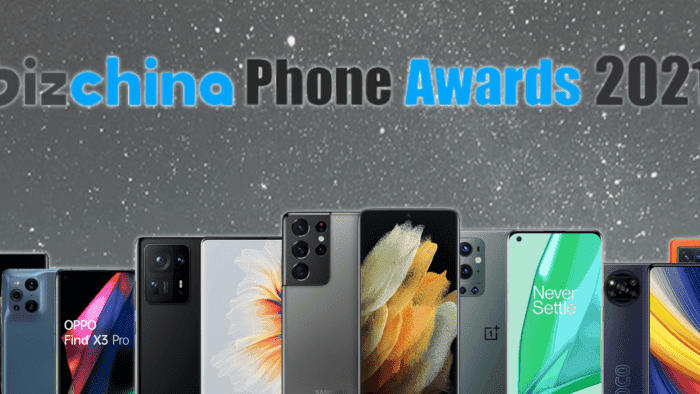The curtains of 2021 are closing and with that, a new year is about to be opened. This year, the market of smartphones brought us many surprises with new compelling devices launching under the various pricing segments. We saw surprises coming from well-established brands, we saw the demise of traditional smartphone makers from the past, and we also saw the consolidation of the foldable segment. In this sea of smartphones that launched between January and December 2021, we decided to build a list to award the best smartphones. That said, we’re listing the best smartphones in our opinion that deserve the Gizchina Smartphone Award trophy. Without further ado, let’s see what 2021 has brought to us and what were the best smartphones in our opinion.
Gizchina Smartphone Award – 2021
In a year that was plagued with the pandemic, we saw companies running to bypass the crisis in the semiconductor industry. Due to the components shortage, we saw brands canceling and postponing smartphones. While others created new lineups in a bid to merge segments and overcome the crisis. Gizchina Smartphone Award is a prize for the best smartphones brought during this year. You may not agree with all devices listed here, but we’re not just considering the technical specs of these devices. By the way, feel free to add your best devices in the comments section below! Worth noting that the devices listed below aren’t listed in a “ranking style”.
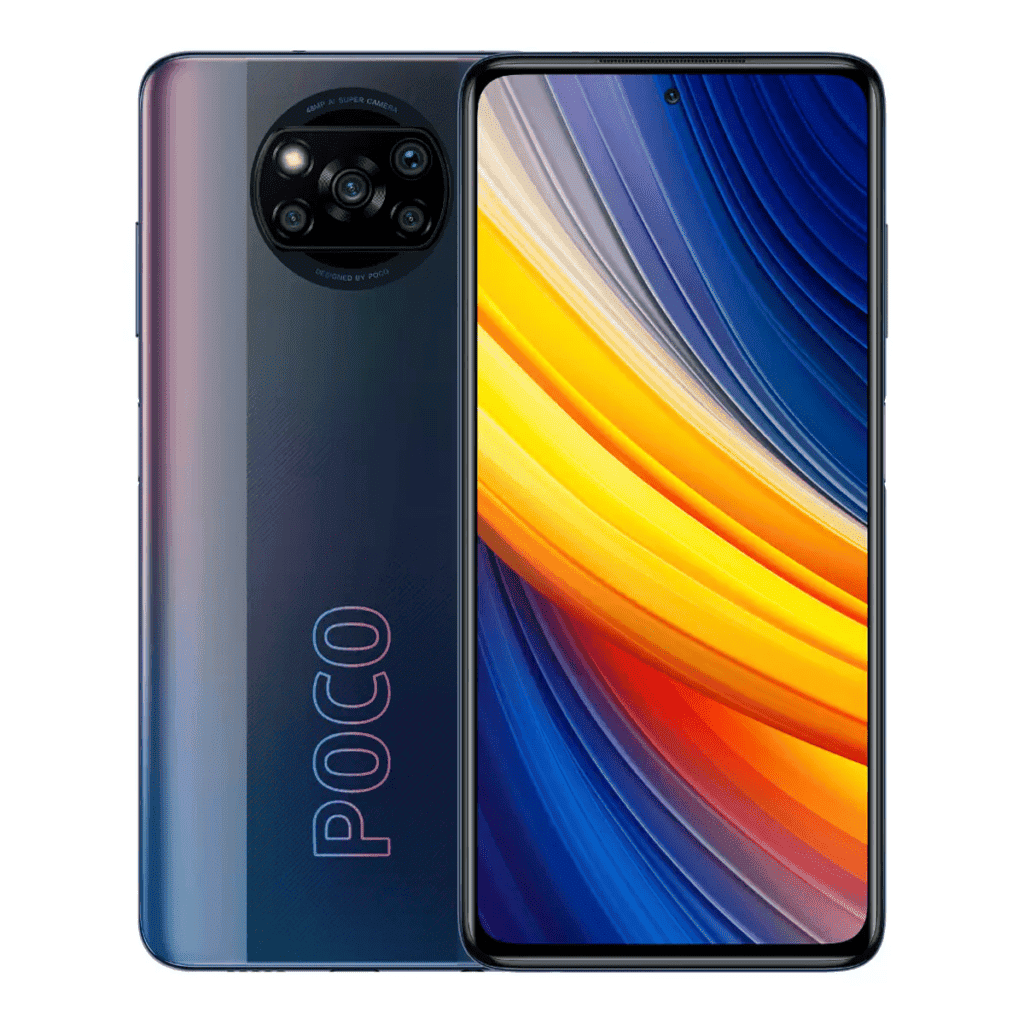
POCO X3 PRO
We start our list with the POCO X3 Pro. This smartphone is easily one of the best value-for-money smartphones released this year. Of course, POCO had to make some sacrifices to bring the performance of flagship to the mid-range segment. However, the device still brings all the performance that gamers want at a very affordable price. The device also has a stellar battery and fast charging to make this a king for games and media lovers.
The POCO X3 Pro was the first smartphone with the Snapdragon 860 SoC. And until now, is one of the very few. As the name suggests this chipset is between the Snapdragon 855 and Snapdragon 865 family. At the end of the day, you will get a flagship-like performance in all tasks. You can play any game on the Play Store with this phone without any hassle, watch movies for several hours and navigate seamlessly through social media apps.
The POCO X3 Pro retains the 6.67-inch LCD screen with a 120Hz refresh rate of its predecessor. It also packs HDR10+ support, and this time around brings a cutting-edge Gorilla Glass 6 technology. The phone is available in variants with 6GB and 8GB of RAM with 128GB and 256GB of Internal Storage. It draws power from a huge 5,160mAh battery equipped and has support for an excellent 33W fast-charging. The phone also has stereo speakers to provide an immersive and loud audio experience.
The big difference between this and the 2020’s POCO X3 NFC is that the phone has a 48MP primary camera down from 64MP in the original smartphone. We do hope that POCO manages to surprise us again with a stellar POCO X4 Pro. Still, the POCO X3 NFC claims the Gizchina Smartphone Award without much difficulty.
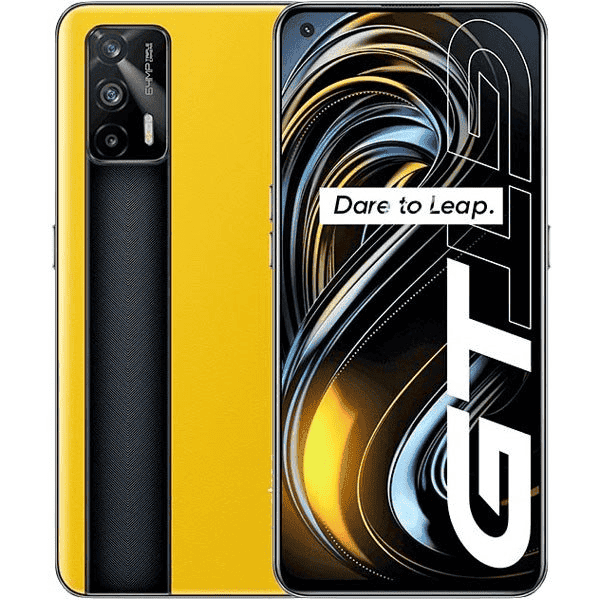
REALME GT 5G
The Realme GT 5G was released in March by Realme. The handset was the company’s first flagship for 2021 and arrived as a “performance flagship” in the company’s “dual-flagship” strategy. It was the company’s first smartphone to sport the Snapdragon 888 chipset. And surprisingly, it was quite cheap with a starting price of $465 in China.
The Realme GT 5G flagship chipset is paired with 8GB of RAM in the base version and 12GB of RAM in the high-tier variant. These variants are paired with 128GB and 256GB of Internal Storage respectively. The phone certainly does not come to impress in the camera department, but this camera setup will surely be enough for your social media applications, especially with all the fancy features provided by Realme UI 2.0 camera application. The phone has a main 64MP camera with PDAF and an f/1.8 aperture. It also packs an 8MP ultrawide camera and a 2MP macro shooter.
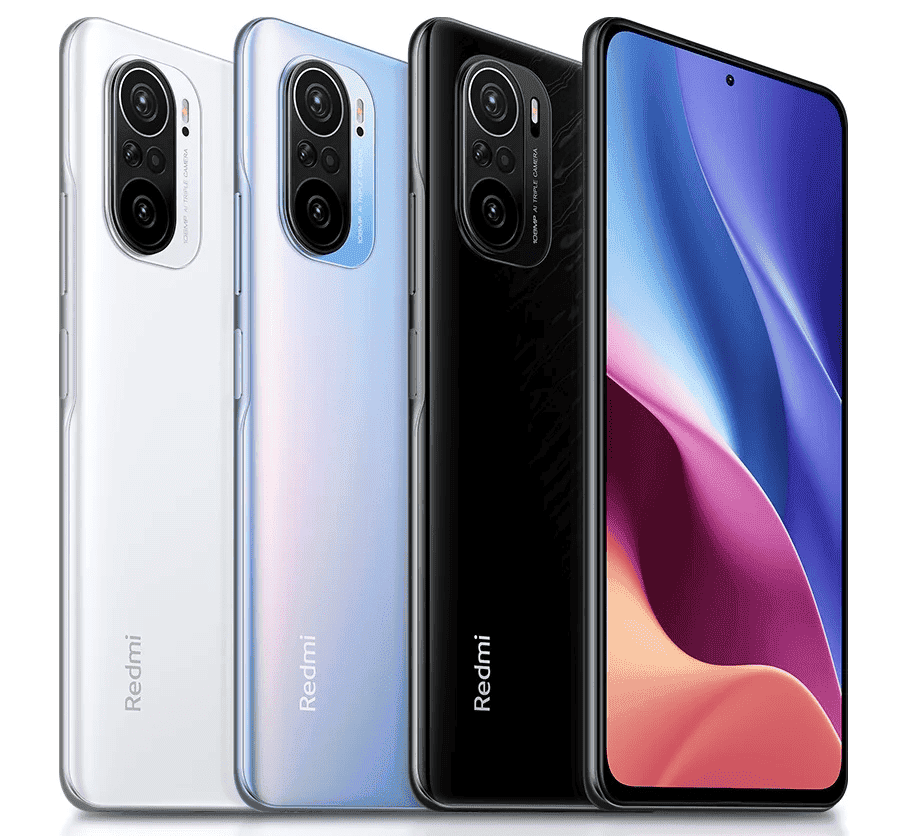
REDMI K40 / POCO F3

Xiaomi Mi 11 Ultra
Xiaomi unveiled the true king of the Mi 11 series in the form of Xiaomi Mi 11 Ultra. The device closes the list as one of the best smartphones ever made by Xiaomi. It certainly deserves a place among the best devices of 2021. So it’s one of our picks in the Gizchina Smartphone Award. After all, it comes with an amazing camera setup, gorgeous display, and huge battery and brings back to relevance the “dual-display” concept.
The Mi 11 Ultra flaunts a gorgeous 6.81-inch AMOLED display with a 120Hz refresh rate, HDR10+, Dolby Vision. It offers 900 nits of brightness and up to 1,700 nits of peak brightness. The device has QHD+ resolution with 3,200 x 1,440 pixels and 515 ppi density. It is covered by the cutting-edge Gorilla Glass Victus.
The Mi 11 Ultra is powered by the Qualcomm Snapdragon 888 5G chipset which is paired with 8GB of RAM and 12GB of RAM. Storage starts on 256GB and goes all the way up to 512GB.
The device has a primary 50MP camera with dual-Pixel PDAF, Laser Auto-Focus, OIS, and an f/2.4 aperture. The secondary camera is a 48MP f/4.1 periscope telephoto module with PDAF, OIS, and 5x optical zoom. A final sensor is also a 48MP unit with an f/2.2 aperture, 128-degrees of FOV and PDAF. Interestingly, the phone comes with a secondary 1.1-inch AMOLED screen that can be used as a viewfinder for capturing selfies with the main camera. You can still take selfies with the frontal camera that offers up to 20MP resolution.
The Mi 11 Ultra has Wi-Fi 6e, Bluetooth 5.2 with A2DP, LE, and aptX HD and full GNSS. It also offers NFC and counts with an Infrared port. The device has a USB Type-C port. The Mi 11 Ultra is an amazing pick for media consumers due to its powers and a huge battery. The device carries a massive 5,000mAh battery which charges very fast thanks to 67W fast-wired charging. It also has fast wireless charging with 67W and reverses wireless charging with 10W.
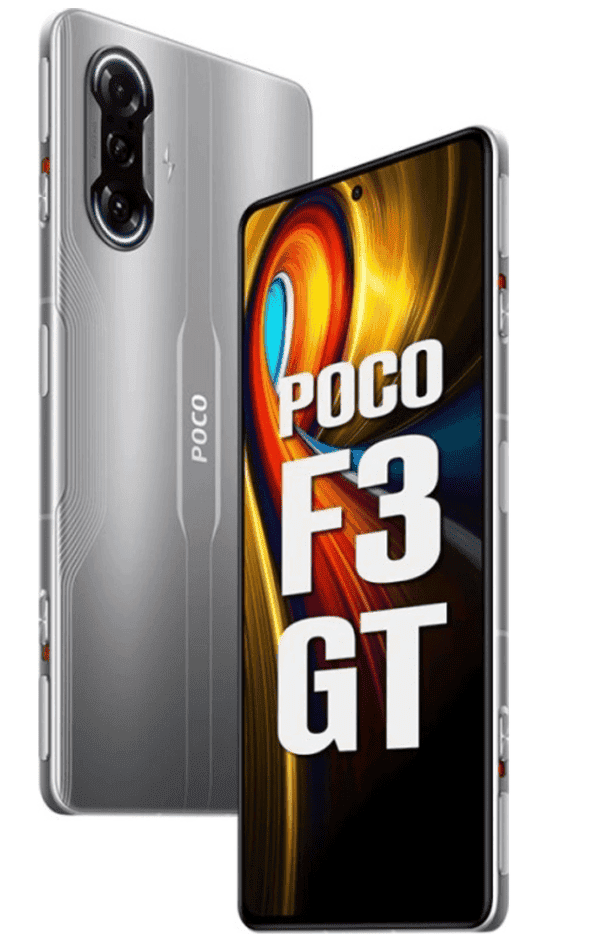
POCO F3 GT
The POCO F3 GT or Redmi K40 Gaming Edition arrived as a cost-effective gaming smartphone. The device has a gorgeous design when we see bulky gaming smartphones. It’s also cheaper and brings the necessary specs for a smooth gaming experience. We consider this one of the best handsets released by POCO this year, and we are eagerly waiting to see how the rumored POCO F4 GT Will perform with the much more capable Dimensity 9000. Meanwhile, let’s give the POCO F3 GT our Gizchina Smartphone Award.
The POCO F3 GT offers a certain appeal as a gaming smartphone. Hence, it packs a whole set of features for extensive gaming sessions. You’ll be able to enjoy the best games in the market with high-quality settings and a stable frame rate. Moreover, the high refresh rate of this display will make the whole experience amazing to the eyes. To the top-notch specs, most gaming smartphones are also excellent products for watching media. The POCO F3 GT flaunts a 6.67-inch display. It’s an AMOLED screen with a 120 Hz refresh rate, 500 nits of brightness, 1B colors, HDR10+ support. The device has a Full HD+ resolution with 2,400 x 1,080 pixels, a 20:9 aspect ratio, and a 339 ppi density. On top of the display, we also have Corning Gorilla Glass 5.
Under the hood, the POCO F3 GT packs a MediaTek Dimensity 1200 SoC (6nm) which also brings Cortex-A78 cores but has a single one clocked at up to 3 GHz. The device also packs a Mali-G77 MC9 GPU which offers the best possible gaming performance on mobile games. The device comes alongside 6 GB, 8GB, and even 12 GB of RAM. In terms of storage, the device has 128 GB or 256 GB of Internal Storage. Unfortunately, there is no micro SD card slot so you’ll have to deal with the available storage. In the future, this device will receive the Extended RAM feature which will add extra virtual RAM based on your storage.
The device packs a triple-camera setup with a primary 64 MP camera with an f/1.7 aperture, PDAF, and 0.7um pixel size. The camera also brings an 8 MP ultrawide snapper with an f/2.2 aperture. Finally, we have a 2 MP macro camera with an f/2.4 aperture. On the front, the device has a 16 MP selfie that sits inside of a centered punch-hole. The device has stereo speakers but unfortunately lacks a 3.5mm headphone jack. The audio is tuned by JBL.
Other notable features include Wi-Fi 6 support, dual-band, with Wi-Fi Direct. The device also has Bluetooth 5.2, GPS, A-GPS, GLONASS, BDS, GALILEO, and other navigation systems. The smartphone has a 5,065mAh battery with 67W fast charging. It supports Power Delivery 3.0 and Quick Charge 3+. The handset runs Android 11-based MIUI 12.5 straight out of the box.
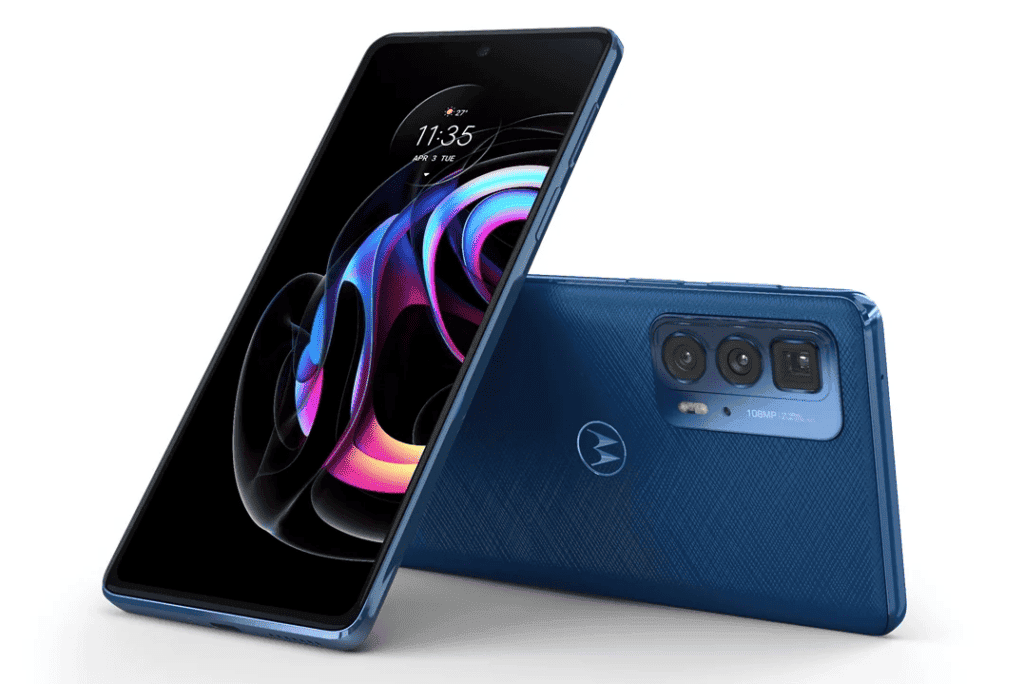
MOTOROLA EDGE 20 PRO
Motorola surprised us earlier this month bringing the world’s first Snapdragon 8 Gen 1 smartphone. However, the company has started its remarkable twist in the flagship scene with the Motorola Edge 20 Pro. The device was truly impressed with some of the best specs in the market. It wasn’t the most powerful flagship smartphone but managed to impress with a 144 Hz AMOLED display and others specs. Therefore, we consider this one of the best smartphones of 2021 and is worthy of the Gizchina Smartphone Award.
The Motorola Edge 20 Pro is the true flagship of the series and brings the most advancements that can make it a better option for certain users. The Motorola Edge 20 Pro comes with the very same 6.7-inch panel with Full HD+ resolution, HDR 10+ and 144 Hz refresh rate. However, it gets the stronger Corning Gorilla Glass 5 coating on both sides. Just like its sibling, this device has a center-aligned punch-hole for the selfie snapper.
Under the hood, the smartphone packs the Qualcomm Snapdragon 870 SoC with 7 nm architecture. That may be a disappointment for those who have been waiting for a Qualcomm Snapdragon 888 SoC. Unfortunately, this has been a common strategy for Motorola it is always one step below its competitors, at least the display pushes it forward. The device comes with up to 12 GB of RAM and 256 GB of Internal Storage.
In terms of optics, we get more advanced cameras. The device has a primary 108 MP camera with PDAF, an 8 MP periscope telephoto lens with 5x optical zoom, PDAF, and OIS. The third and final sensor is a 16 MP ultrawide snapper with an f/2.2 aperture. The device has a 32 MP selfie snapper with an f/2.3 aperture and 0.7-pixel size.
The device drops the 3.5 mm headphone jack but brings Wi-Fi 6 connectivity. It also packs Bluetooth 5.1 with A2DP and LE. The device has GPS with A-GPS, GLONASS, BDS, GALILEO. It also has NFC, FM Radio and comes with a USB Type-C 3.1 port. The device gets a bigger 4,500 mAh battery with the very same 30 W fast-charging support.
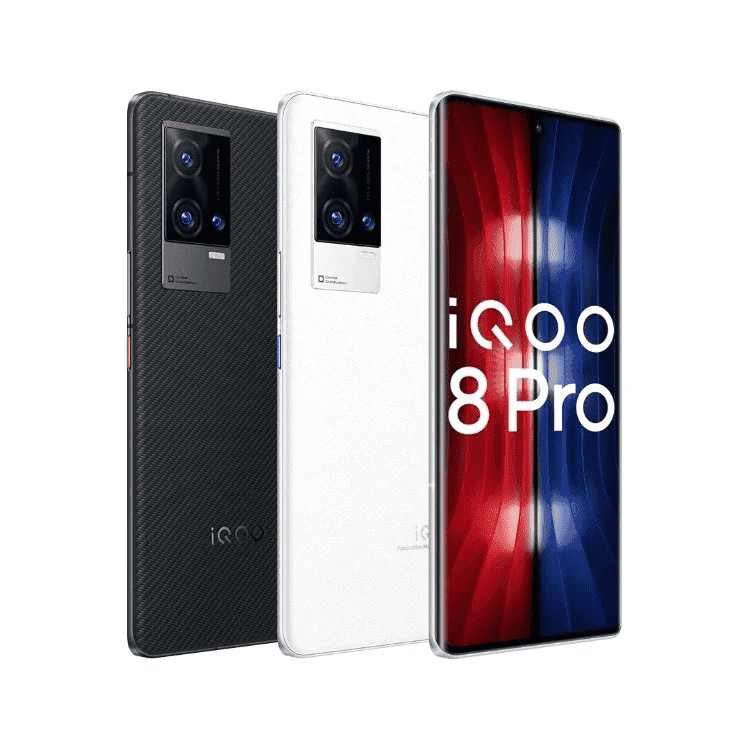
IQOO 8 PRO
A few months ago, iQOO unveiled its iQOO 8 series. It was the second generation of flagships released by the brand in 2021. For obvious reasons, we’re just listing the iQOO 8 Pro here as it brings everything that the iQOO 7 has and improves it even further. For gamers and hardware enthusiasts the iQOO 8 Pro certainly is among the best smartphones of 2021.
The iQOO 8 Pro boasts a 6.78-inch LTPO AMOLED display with a 120 Hz refresh rate. The LTPO nature of this display means that it can dynamically change between 1 Hz and 120 Hz depending on the screen’s content. The device has a QHD+ resolution with 3,200 x 1,440 pixels and a whopping 518 ppi density. The device has an 89.4% screen-to-body ratio, HDR10+ support, Dolby Vision, and an impressive peak brightness of 1,500 nits.
In terms of performance, the iQOO 8 Pro is beyond its sibling and beyond most of the smartphones launched in 2021 minus the Mi MIX 4. The device is one of the few smartphones launched with the Qualcomm Snapdragon 888+. The Plus variant boosts the prime core to almost 3 GHz exceeding its predecessor in performance. The device still has the Adreno 660 GPU which is enough to handle anything in the Google Play Store. The iQOO 8 Pro comes with 8 GB of RAM, and 12 GB of RAM. Storage-wise it is available in 256 GB and 512 GB of UFS 3.1 storage options.
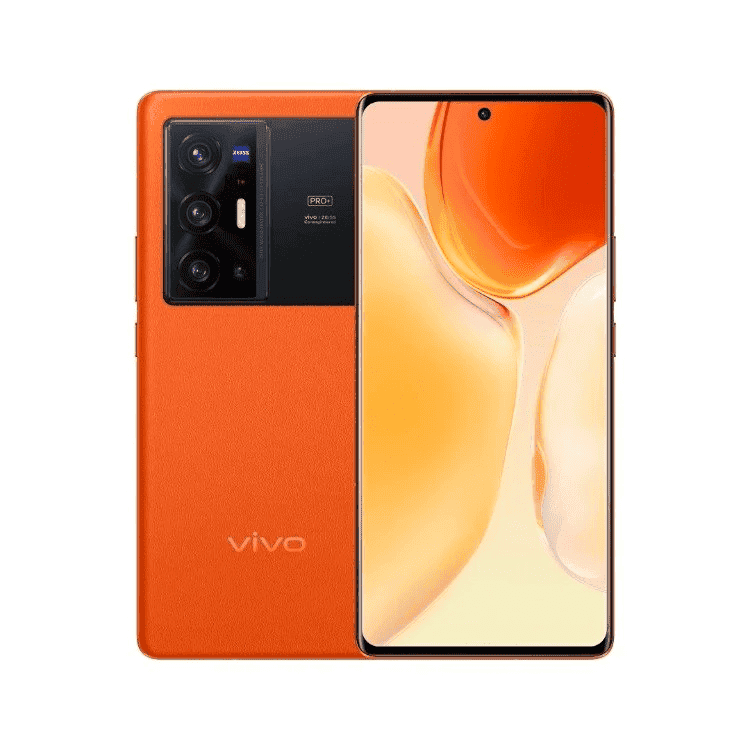
VIVO X70 PRO+
Vivo made its name this year with the Vivo X70 Pro+. The device brought the company’s second-generation Gimbal Optical Image Stabilization System and was also the first to introduce the company’s ISP. It’s one of the best devices for camera enthusiasts released in 2021. It certainly was the best smartphone brought by Vivo this year.
The Vivo X70 Pro+ flaunts a 6.78-inch Samsung E5 AMOLED display which is bigger and better than the 6.56-inch found on the X60 Pro+. The device also gives a step forward in resolution with 3,200 x 1,440 pixels which is a major step forward from its predecessor 1080+ and maintains the HDR support.
The new display uses an LTPO panel, therefore it can gradually adjust its refresh rate in the range 1 Hz to 120 Hz. It adjusts dynamically depending on the content shown in the screen. The touch sampling rate is 300 Hz. Moreover, the newer E5 panel also uses 25 percent less power than the older E4 panels.
Under the hood, the excellent smartphone carries the Qualcomm Snapdragon 888+. It’s better than most smartphones released this year with the SD888. This variant boasts the prime CPU core to 2,995 GHz, up from 2.84 GHz. It also boosts the AI engine by 20%. The device is paired with LPDDR5 RAM with 8 GB or 12 GB capacity. There is also 256 GB or 512 GB of UFS 3.1 storage.
The Vivo X70 Pro+ certainly ticks most of the boxes in the display and performance department. However, the big star here is the camera setup. The main camera is built around the 50 MP Samsung GN1 sensor with 1.2um pixels (2.4um with binning). There is an ultrawide camera with 48 MP resolution and a gimbal stabilization system.
There are also two telephoto modules. One is an 8 MP 125 mm periscope lens with 5 x magnification and f/3.4 lens. The latter is a 12 MP sensor with a brighter f/1.6 lens and 50 mm size. All four cameras boast some sort of Optical Image Stabilization as well as electronic stabilization. The lenses also feature ZEISS T* anti-reflective coating. Moreover, the optics-centric brand has contributed to the ultra-low dispersion glass for the lens, reducing glare and chromatic aberration. The company has changed the setup with the addition of its new Custom V1 chip that handles the image processing and does some advanced AI magic. It also works to ensure that the system will use less energy than the chipset running the same algorithms. Also, there’s a ceramic “cloud windows”, though that’s mostly there for decoration.
The new model draws its powers from a 4,500 mAh battery which charges fast via 55 W fast-charging. In addition to this, the device has 50 W wireless fast charging. The device runs Android 11 OS with Origin OS 1.0 on top. The Vivo X70 Pro+ is a masterpiece for camera enthusiasts and also has everything you need in terms of performance. As a result, we consider it one of the devices for the Gizchina Smartphone Award.
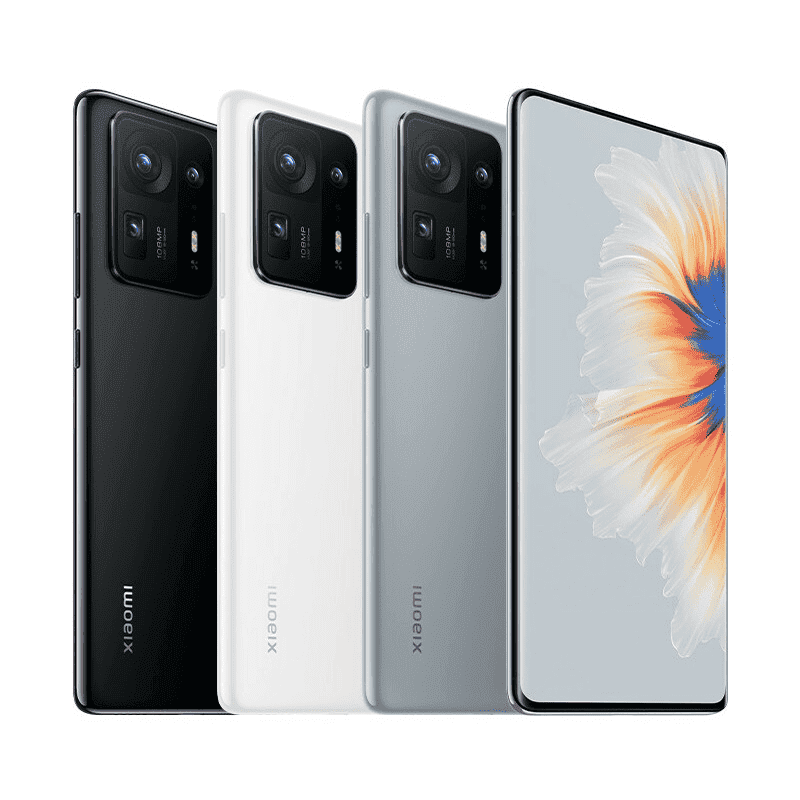
MI MIX 4
The Mi MIX 4 wasn’t a widely available smartphone, but it still was one of the most intriguing and interesting devices released by Xiaomi this year. The Mi MIX 4 marks the return of the legendary full-screen series with a good portion of style. It boasts cut-edging specifications and also has the company’s first take in the under-screen camera technology.
The Mi MIX 4 shines in the display department. This panel has no interruption, no notch, no punch-hole it’s completely free. It’s a large 6.67-inch AMOLED panel with HDR10+ support, 120 Hz refresh rate, Dolby Vision, and 800 nits brightness. The device has a Full HD+ resolution with 2,400 x 1,080 resolution, 20:9 aspect ratio, and 395 pixels per inch density. The panel is covered with a Corning Gorilla Glass Victus.
Under the hood, the handset has a Qualcomm Snapdragon 888+ chipset with is the most cutting-edge chip in the industry right now. The phone is available in options with 8 GB of RAM and 12 GB of RAM. So there is nothing that this smartphone can’t handle right now.
In terms of optics, the Mi MIX 4 packs a 108 MP camera with f/1.9 aperture, Dual Pixel PDAF, Laser AF, and OIS. Furthermore, it has an 8 MP periscope telephoto camera with PDAF, OIS, and 5x optical zoom. Last but not least, the device has a 13 MP camera with an f/2.2 aperture. In the front, we have an impressive under-display 20 MP camera. It’s not the best camera in the world but is promising since it is invisible to the eyes.
The Mi MIX 4 has stereo speakers tuned by Harman Kardon, Wi-Fi 6e, Bluetooth 5.2, and NFC. It also has GPS with GLONASS, GALILEO, BDS, QZSS, and NavIC. Further, it has an optical fingerprint scanner and Ultra-Wideband support. The device draws powers from a 4,500 mAh battery with 120 W fast-charging support. It can also charge wirelessly at a 50W speed.
Hopefully the Mi MIX 5 will return to global markets. Meanwhile, let’s give the Mi MIX 4 our Gizchina Smartphone Award.

Galaxy S21 Ultra
As usual, Samsung unveiled three flagship smartphones this year. However, the big star of the show was the Galaxy S21 Ultra. The Ultra variant brought the most impressive specifications, best features, and the best design in the lineup. If we look at Samsung, the S21 Ultra certainly is among one of the best smartphones of 2021 and therefore marks its presence here as one of devices that worth the Gizchina Smartphone Award.
The Samsung Galaxy S21 Ultra flaunts a large 6.8-inch display with Gorilla Glass Victus. It’s a Dynamic AMOLED display with 2K resolution, 120 Hz refresh rate, HDR 10+ and 1500 nits of brightness. Under the hood, the device brought variants with Snapdragon 888 and also with the Exynos 2100 with up to 16 GB of RAM and 512 GB of Internal Storage.
While the other two Galaxy S21 phones are shy in the camera specs, the S21 Ultra expands everything. The device has a 108 MP primary camera with Laser AF, OIS. It also has a 10 MP periscope telephoto camera, 10 MP telephoto lens, and 12 MP ultrawide snapper. FOr selfies and video calls the device has an impressive 40 MP camera.
The device has stereo speakers, Bluetooth 5.2, and Wi-Fi 6e. It draws its powers from a massive 5,000 mAh battery, but the big downside is on the 25 W fast-charging. Even so, the handset is one of the most impressive devices released this year and deserves a Gizchina Smartphone Award.
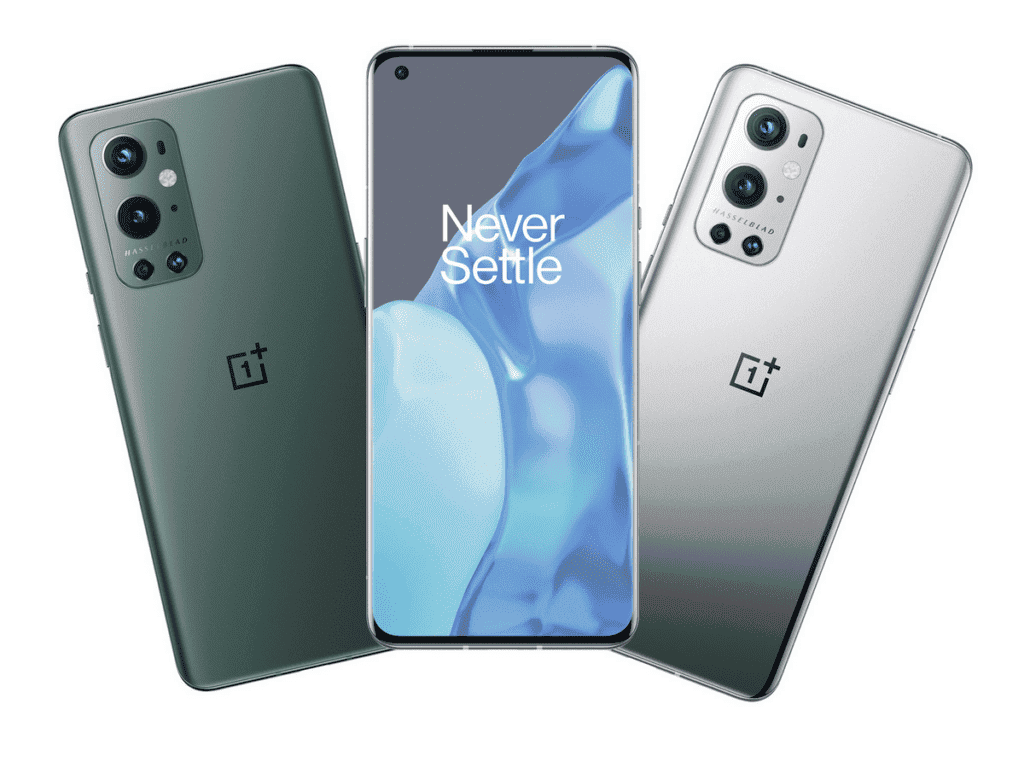
OnePlus 9 Pro
The OnePlus 9 Pro was the best device unveiled by the company in 2021, and figures as one of the best smartphones for 2021. Therefore, we’ve decided to list it here as one of the best launches for 2021 and gives it the Gizchina Smartphone Award. The OnePlus 9 Pro flaunts a 6.7-inch AMOLED display with LTPO technology and 120 Hz refresh rate. It’s covered with Gorilla Glass 5 and was the first OnePlus to pack a 2K resolution.
Under the hood, the OnePlus 9 Pro brought 12 GB of RAM with up to 256 GB of Internal Storage along with the Snapdragon 888 SoC. In terms of optics, the OnePlus 9 Pro brought a 48 MP main camera with omnidirectional PDAF, an 8 MP telephoto snapper, a 50 MP ultrawide camera, and a 2 MP monochrome snapper. The device has Hasselblad branding that also brings some software tweaks to further enhance the experience. The handset has a 16 MP snapper for selfies and video calls.
The device has Wi-Fi 6e, Bluetooth 5.2, and a USB Type C with 65W fast-charging support. The OnePlus 9 Pro also brings a large 4,500 mAh battery and runs OxygenOS or ColorOS depending on the region.
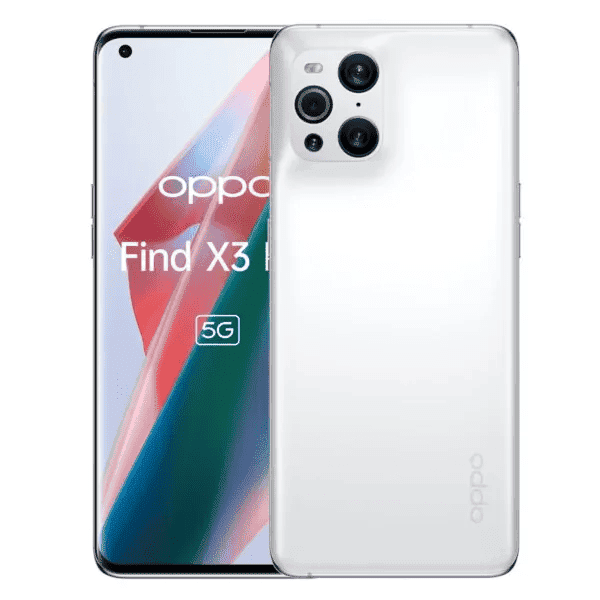
Oppo Find X3 Pro
Oppo unveiled a multitude of Reno smartphones, but the Oppo Find X series is still above anything the company has for the segment of smartphones. The Oppo Find X3 Pro is our choice for the Gizchina Smartphone Award. The device has many pros and excels in the camera department, but is also a beast in terms of performance.
The Oppo Find X3 Pro packs a massive 6.7-inch AMOLED display with the LTPO technology. It has HDR10+ support, a 120 Hz refresh rate, and 1,300 nits of brightness. It’s covered with Corning Gorilla Glass 5 and has a punch-hole for the selfie snapper.
Under the hood, the device has the Snapdragon 888 SoC with up to 16 GB of RAM and 512 GB of Internal Storage. For the camera, the device has a 50 MP primary camera, a 13 MP telephoto snapper, a 50 MP ultrawide snapper, and a 3 MP microscope camera. Oppo’s Find X3 Pro’s big innovation is on the microscope camera that boasts an impressive 60x magnification. For selfies and video calls, the device brings a 32 MP selfie snapper.
The device draws its powers from a huge 4,500 mAh battery with 65 W fast-charging and 30W wireless charging.
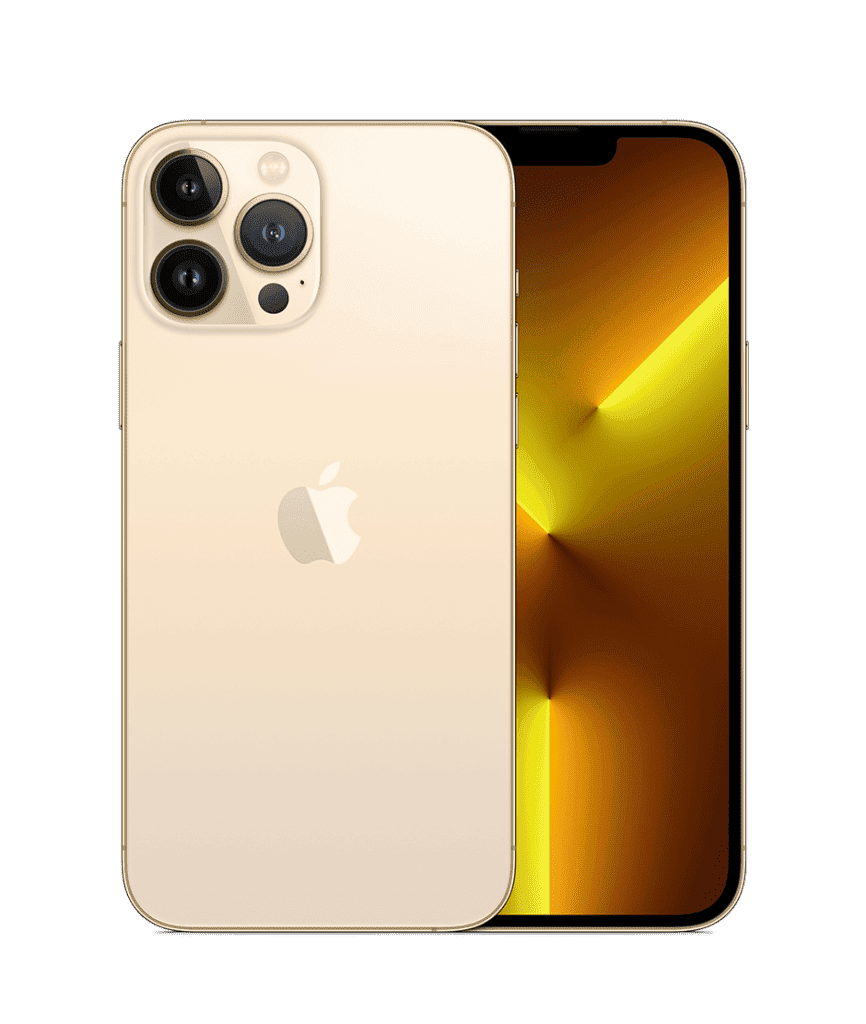
iPhone 13 Pro Max
If you’re a loyal Apple user, just one smartphone will be your choice for 2021. That said, among Apple devices the iPhone 13 Pro Max is the best offering and worthy of the Gizchina Smartphone Award.
The iPhone 13 Pro Max brings a massive 6.7-inch display with 2,778 x 1,284 resolution, ceramic glass. Under the hood, the device has an Apple A15 Bionic processor with Apple’s custom Avalanched and Blizzard cores made on the 5 nm process. The device has up to 6 GB of RAM and up to 1 TB of Internal Storage.
In terms of optics, the handset has a 12 MP wide camera with PDAF and OIS, a 12 MP telephoto camera with PDAF and OIS, and a 12 MP ultrawide snapper. There is also a ToF 3D LiDAR scanner for depth sensing and other features.
The 13 Pro Max has stereo speakers, Wi-Fi 6, Bluetooth 5.0, Lightning port, and Face ID. The device has a 4,352 mAh battery which is the largest for iPhones and runs iOS 15.1.
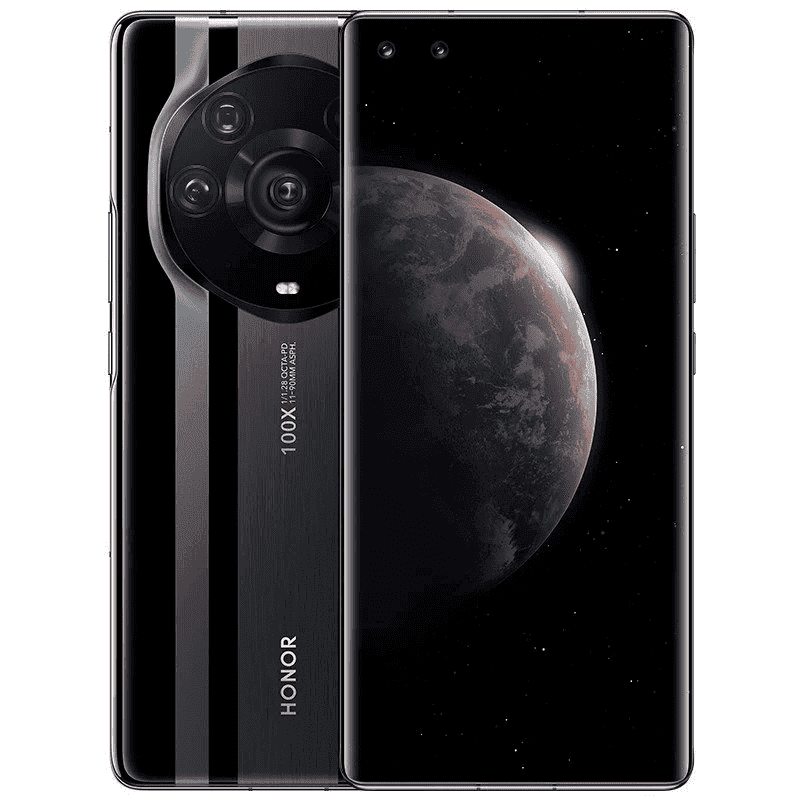
Honor Magic 3 Pro+
Honor made its big return this year to the smartphone scene as an independent company. The company brought one of the most impressive flagships in the form of Honor Magic 3 Pro+. It may not be the “most available” smartphone, since it’s limited to China, but still worth the Gizhina Phone Award label.
The Honor Magic 3 Pro+ packs a 6.76-inch OLED display with Full HD+ resolution and 120 Hz refresh rate. Under the hood, the device has a Qualcomm Snapdragon 888 SoC with up to 12 GB of RAM and up to 512 GB of Internal Storage.
The Honor Magic 3 Pro+ has a 50 MP main camera, a 64 MP telephoto snapper, a 64 MP monochrome camera, and a 64 MP ultrawide snapper. The device also has a ToF 3D depth sensor.
The device has stereo speakers, Wi-Fi 6, Bluetooth 5.2, and GNSS. Other features include Ultra Wideband support and an under-display fingerprint scanner. The handset draws its powers from a 4,600 mAh battery with 66W fast wired charging and 66W wireless charging.
Your Best smartphone in 2021
And here is our list of the best smartphones of 2021. But what is your best device for 2021? Leave in the comment below. We take this opportunity to wish all our readers a happy new year! That 2022 brings us many new things, prosperity, and happiness.

